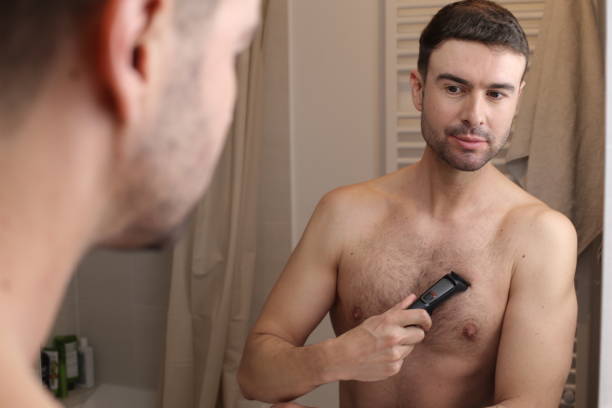How to Prevent Ingrown Hairs After Hair Removal
Struggling with ingrown hairs? Learn the causes, prevention methods, and best post-care routines for men.
Why Ingrown Hairs Are a Common Problem for Men
If you’ve ever experienced painful red bumps after shaving, waxing, or trimming, you’re not alone. Ingrown hairs are one of the most frustrating side effects of men’s hair removal routines.
These small but painful bumps occur when hair curls back or grows sideways into the skin, leading to inflammation, itching, and sometimes infection. Men, especially those with coarse or curly hair, are particularly prone to this issue—especially in areas like the neck, chest, pubic region, and underarms.
Understanding the cause of ingrown hairs is the first step in stopping them. The most common causes include:
1. Improper Shaving Technique
2. Dead Skin Cells
3. Curly or Coarse Hair
4. Tight Clothing
Ingrown hairs can occur anywhere, but some areas are more vulnerable:
- Neck and jawline (especially after shaving)
- Chest and stomach
- Pubic region and inner thighs
- Underarms
- Back and shoulders
Each area may require a different approach depending on the removal method used and skin sensitivity.
How to Prevent Ingrown Hairs
1. Exfoliate Regularly
Dead skin can trap hairs. Exfoliating 2–3 times a week helps keep skin smooth and pores clear.
- Use a gentle scrub or chemical exfoliant with AHA/BHA
- Focus on areas prone to ingrowns
- Avoid over-exfoliating, which can irritate the skin
2. Shave with the Grain
Shaving in the direction of hair growth reduces the chance of hair curling back into the skin.
- Use a sharp razor
- Avoid pressing too hard
- Replace blades often to prevent nicks
3. Don’t Shave Too Closely
A super-close shave increases the risk of ingrown hairs. Leave a bit of stubble when possible.
4. Moisturize Daily
Dry skin increases irritation. Use fragrance-free moisturizers to keep your skin healthy and soft.
5. Try Alternatives to Shaving
Consider switching to:
- Waxing, which removes hair from the root
- Depilatory creams (test for sensitivity first)
- Trimming for sensitive or high-risk areas
Specific Tips Based on Hair Removal Method
Shaving
- Use pre-shave oil and post-shave balm
- Don’t stretch the skin while shaving
- Rinse blade after each stroke
Waxing
- Exfoliate 24 hours before
- Avoid heat, sweat, and tight clothes for 48 hours after
- Use calming creams post-wax
Laser Hair Removal
- Minimal risk of ingrown hairs after a full treatment cycle
- Use SPF and gentle cleansers during healing
Despite precautions, ingrown hairs can still happen. Here’s how to handle them safely:
Do:
- Apply a warm compress to soften skin
- Gently exfoliate to free trapped hairs
- Use salicylic acid or glycolic acid to reduce inflammation
- Keep the area clean to prevent infection
Don’t:
- Don’t squeeze or pick at the bump—it can cause scarring
- Don’t use harsh scrubs on inflamed skin
- Don’t shave over irritated areas
If you notice signs of infection—such as pus, swelling, or pain—or if ingrown hairs become a recurring issue, it’s time to see a dermatologist or grooming expert.
They may prescribe:
- Topical antibiotics
- Retinoids to clear skin
- Professional extraction for severe cases
Long-Term Habits That Make a Difference
Preventing ingrown hairs isn’t about finding a one-time fix—it’s about consistent habits:
- Invest in quality grooming tools
- Follow a skincare routine tailored to your body hair type
- Stay hydrated and eat a balanced diet for better skin health
- Avoid tight synthetic fabrics in high-friction zones
Ingrown hairs are frustrating but manageable with the right approach. From shaving smarter to moisturizing regularly and choosing gentler hair removal methods, modern men can enjoy smooth, bump-free skin without the hassle.
